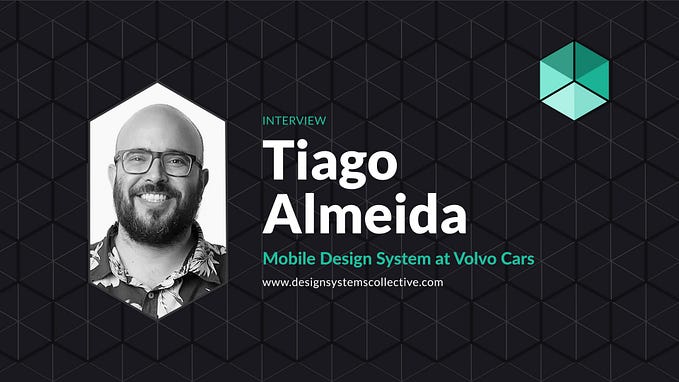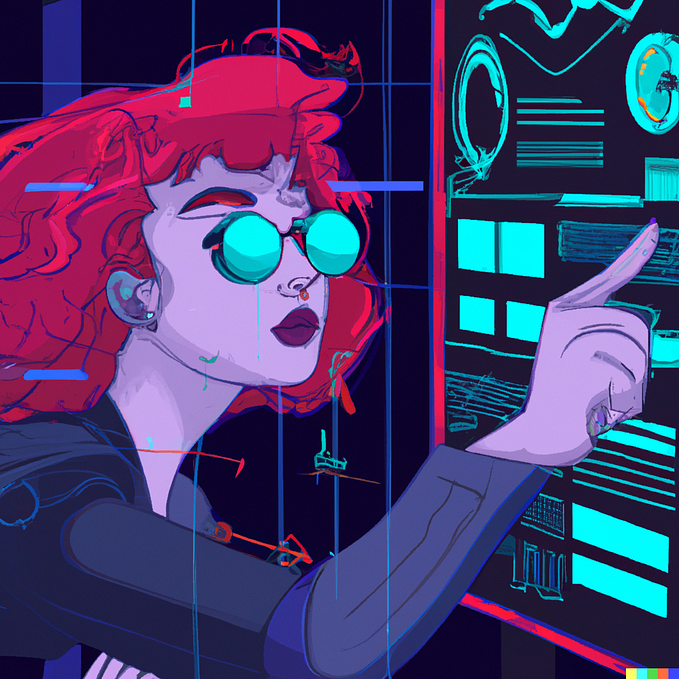Overcoming implicit bias in your design process
5 steps to start making better products for a diverse audience.

“Our comforting conviction that the world makes sense rests on a secure foundation: our almost unlimited ability to ignore our ignorance.”
― Daniel Kahneman, Thinking, Fast and Slow
What’s missing from our perspective of who our users are, and what can go wrong for them, when we’re designing products?
In the solution space that we researchers and designers occupy, how can we find out what, and who, is missing from our knowledge? What will make our designs just work for a more diverse range of people?
Everyone’s personal blind spot
One of the things that stops us from creating for our diverse range of users is our own implicit bias. Implicit bias is the involuntary thinking that goes on below your level of awareness, and the shortcut your brain takes to associate feelings and thoughts to someone. Everything you’ve experienced in your life up to this point — the country, culture, and environment you’ve grown up in, from a child up to now — will shape the way you think and feel about others. You’ll instantly, and unconsciously, associate thoughts and feelings about someone purely based on their sexual orientation, race, ethnicity, language, physical appearance, or age without seeing any holes in your beliefs — until somebody else points out these holes, or you intentionally seek out ways to uncover this bias.
“Scientists estimate that we do 95% of our thinking below the threshold of conscious thought”
All this makes sense for our brains from an evolutionary point of view. If we’d heard constantly from everyone in our tribe that tigers kill people, then we’d understandably appreciate an unconscious shortcut kicking in telling us to scamper if we saw anything that looked like a tiger in the bushes — even if it was just a trick of the light. We’d rather be slightly embarrassed and alive, than poking in the bushes with a stick and eaten. 🐅
The problem is that our brains have carried over this type of thinking into modern life — taking what you’ve heard directly from family and authority figures, and what you’ve indirectly consumed from media and advertising throughout your life — leading to only having a partial perspective of the world. This perspective of the only world you’ve ever known means that we can easily base our beliefs and decisions entirely on assumptions and perspectives we think are true.
Implicit bias characteristics
Research states that there are five characteristics of implicit bias:
- Everyone possesses them (yes, even people like judges who are meant to be impartial and objective)
- Implicit and explicit biases can reinforce each other
- The implicit associations we hold are not necessarily the same as our declared beliefs or reflect the stances we take
- We tend to hold implicit biases that favour our own in-group (though we can still hold bias against our in-group)
- Implicit biases can be gradually unlearned 🎉
It’s the last point we should all be celebrating. By making concerted efforts to poke holes in our (and our teams) implicit biases we can find ways to make our designs work for a wider spectrum of users and minimise unintentional harm.
Five ways to overcome your implicit bias
Below I’ve listed five techniques that I’ve started to incorporate into my everyday design process/toolbox to try and uncover the implicit biases that myself, and the people I work with, are unaware of.
1. Make personas challenge assumptions
This will be the most controversial of things I’m doing at the moment. Everyone seems to have their opinions about personas — are they needed, not needed, or done in the correct way — but at some point you’ll find they’re a useful tool in your work.
Whether you’re lucky enough to work with a UX researcher, or you do the research yourself, we can always challenge people’s assumptions of your users by making your personas work a little harder.
A good way to do this is to remove any demographic information to avoid bias about the user from the start. Does your team really need to know that the primary user navigating your interface is a 29yr old female, who lives in London, and has a high income? This all just adds implicit biases to the mix right away.
What about the persona photo I hear you ask? I’ve been guilty of adding a cheerful stock photo in the past. I then went through a period of removing the photo completely, as I felt a stock photo was bringing preconceived notions of the user to the table. I’ve now started to question this thinking, and have decided to use photos of real users — someone who doesn’t meet the stereotypical view of who we think our users are. This is a great way to get your team to question any underlying assumptions when they see someone they don’t expect visually represented.
“Photos are badly done at least half the time … but the right set of photos can help the (often very male and white) team remember that the whole user base doesn’t look like what they expect.”
— Kim Goodwin
If you really don’t have access to photos of your real users then try tonl.co. They’re a stock photo alternative company that does photography that challenges the usual stock photo norm of a white person/people laughing at nothing in particular.
But don’t just stop there. We can also use a name for our persona from an under-represented group as well. A persona is just a representation of the insights we’ve gathered about our users, so present them in a way that broadens everyone’s thinking of your “typical” user.
A word of warning though: Don’t just do this as a box-ticking diversity exercise. Make sure you’re doing this to creatively challenge narrow assumptions about your audience and that you’ve actually included under-represented people in your research.
2. Facilitate workshops that uncover more
Conduct workshops with your team, and others, that challenge assumptions about our users, the product, and expected successful outcomes. Building these “checks and balances” types of workshops into your design process will help you uncover negative outcomes that could happen, but that you and the team won’t see with your “positive-vibes-only” glasses on. 🤓
Here are some workshop ideas to get you started:
The pre-mortem
Imagine that it is six months later and the project has been a spectacular failure. It hasn’t achieved what the team set out to do at all. Get participants to consider vulnerable, divergent, and under-represented members of your audience, how this product was exploited or used to cause harm to others, or how the product was misused — then get them to silently write down the reasons why and discuss. This helps your team steer away from these outcomes and towards better solutions.
8-up sketching
This is an oldie, but a goodie. Get eight participants to individually sketch out three ideas in three minutes to a “How might we…?” question. Then move the participants into pairs and get them to combine those six ideas into two sketches. Then each pair shows their two ideas to another pair, who also share their two ideas. Finally these four participants will combine their four ideas into one sketch. At the end of the workshop you end up with two ideas that have a little of everyone’s DNA or lived-experience in them — which will open them up buying into the design/strategy as they had a hand in it.
The more diverse the people in the room, the better the ideas as well. Get internal people from different departments (marketing, IT, customer service, etc) and different positions (managers, practitioners, juniors, etc). Bring in people from outside the company as well — use a cross-section of your users, especially those users who aren’t usually considered.
Different user scenarios
This is a great online card game I recently discovered (created by the folks at Idean), and requires you to work out how your product can be used by different people with different needs. You’re dealt two cards, the first with a person and their needs, and the second with a situation this person finds themselves in, and your job as a team is to figure out ways your product could change to meet these user scenarios.
3. Think accessibility from the start
Thinking about accessibility from the moment you start designing is going to be immensely helpful to break out of the “designing for yourself” mentality that we can easily fall into. As you design, think about how someone with a permanent or temporary disability will be able to use your solution.
How will people with visual, hearing, cognitive, and motor difficulties use this design?
How will the environment affect how someone uses the product?
What are the many ways people could navigate through this?
Setting up regular usability testing with a diverse range of under-represented and disabled people will also help you get away from designing for yourself. There’s nothing more humbling than putting your concepts in front of different people and seeing the idea that “everyone will understand” come unstuck, or seeing someone fail to navigate your product using a keyboard or screen reader.
Don’t see designing with accessibility from the start as a constraint. See it as something that will help you view your design from different perspectives, which will allow you to make better choices for your broad range of users.
4. Explore the “unhappy paths”
Don’t just design for the happy path — find out and explore the unhappy paths as well. Don’t just write off the unhappy paths as an edge case that can be fixed later. These paths are the real-life stress cases that some of your users will go through, and it’s your job to think of, and solve, as many of these now before people are impacted.
How could people game the system?
How could they break it?
Who could use it to somehow harm others?
These are questions no-one ever really likes to ruminate on — we all want to imagine the wonderful positive impact our product will make and how it will make people’s lives better — but our positive intentions don’t offset any negative impact that can happen through our lack of thought. We can build much more robust and humane products that cater for much more diverse and real-life scenarios for people who aren’t you.
In an industry that is obsessed with speed we need ways to actually question if we are heading in the right direction? Exploring the unhappy paths at the start of a project may slow you down slightly, but when you do start to accelerate you’ll know it’s in the right direction. There’ll be less need for reworking and backtracking later when the unexpected happens.
“Intent does not erase impact”
— Tatianna Mac (“System of Systems” video)
5. Educate yourself / Involve others
(Okay I’ve sneakily made this two points, but I think they go together well. 😊)
One of the best ways to start overcoming implicit bias is to acknowledge that you have them in the first place. Uncover your biases by continually seeking out different points of view, looking at things from a different perspective, reflecting on what you’ve learnt, and committing to seeking out and changing your implicit bias.
Educate yourself
Start recognising your own implicit biases by taking a series of online tests. Project Implicit, by researchers at Harvard, will measure your implicit bias associated with race, gender, sexuality, disability, and age.
The results will definitely make you stop and question yourself. When I took the association test the result came back that I was more inclined to associate unpleasant words with African-American names and faces, which is an uncomfortable feeling to have to sit with when I consider myself anti-racist.
Just reflecting on your personal biases means that you will be more aware when you do make snap decisions. Hopefully it will make you pause, and ask some deeper questions such as “Why do I think this?” and “If I looked at this from this different perspective would I still have the same feeling?”.
Don’t confuse this with constantly doubting yourself though (we’re designers — we do enough of that already 😅), this is more of a continual course correction of your thinking to achieve healthier outcomes for you and your users.
Involve others
Become a role model to others by making sure that everyone has a voice and that different perspectives are involved in your design process. When running workshops or having conversations with your team and others, make sure that everyone’s voices and perspectives are being heard. This could mean just reaching out to someone in a meeting who’s not being included or following up with them later, to find out their view. Doing something as small as this reinforces that everyone’s opinion matters.
Also learn to accept that you will be wrong, you will make mistakes, you will say the wrong thing sometimes — and that’s okay. Admit you’re wrong, learn from it, and move on with extra knowledge that you’ve just unmasked a bit more of your own implicit bias.
Build better products
Obviously there are so many more design methods and tools that can be added to your design process to uncover implicit biases, but hopefully this small selection has sparked your interest in trying some of these methods and techniques.
For great design to happen we need to be able to reflect on our own implicit biases, uncover where things can break in our work, shift our perspective away from what we’ve always known, and meet the needs of more of our diverse users as early as possible — before unexplored and harmful impacts occur.
None of us are perfect, and we’re never going to uncover every scenario that could befall a user — but that’s no reason not to try and build better products for our diverse audience. 🙌
Want to dive in deeper?
Below are some of the great books I’ve read over the years that have shaped my thinking around inclusive design and exploring bias. Definitely add them to your reading list. 🤓
- Ruined by Design — Mike Monteiro
- Technically Wrong — Sara Wachter-Boettcher
- Design for Cognitive Bias — David Dylan Thomas
- Design for Real Life — Eric Meyer & Sara Wachter-Boettcher
- Cross-cultural Design — Senongo Akpem
- Mismatch — Kat Holmes
- Mindful Design — Scott Riley
- Future Ethics — Cennydd Bowles








